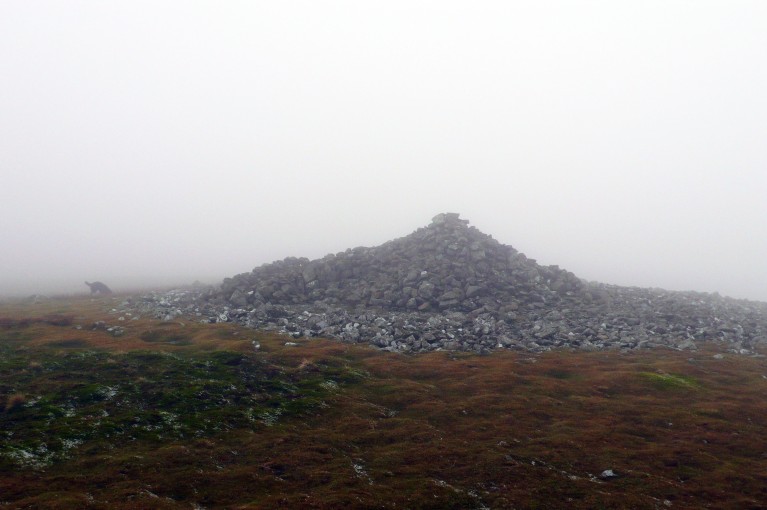Memories in the Mist
It’s a long way from Flanders Fields to Great Gable, hub of Wordsworth’s Lake District “wheel”. For over 90 years a pilgrimage of remembrance has led to a poignant monument, here on the summit rocks, on Remembrance Sunday. It is to those members of the Fell and Rock Climbing Club who were killed in the First World War and would never tread these fells again, people pause and take a moment of silence up here to remember all victims of war; mans folly.
Cairns have generally been built to mark summits or as way-markers. They are proliferating, people add to them, marking another “Wainwright” climbed perhaps or someone’s passing, some are appropriated as formal or informal memorials to the dead. There is a continuity with the past here, as just some of these summit Cairns are prehistoric, a memorial place perhaps for a local tribe.
Now in a dynamic landscape being altered by man, pounded by the constant tread of boots, it is quite hard to identify which cairns have been here for a hundred years or so and which have been for a few thousand years. There are sometimes a few clues to be seen in their eroded structures but otherwise we are reliant on reports of antiquarians and surveyors from a time before the Lake District became popular for walkers. One of these people was James Clifton Ward a member of the British Geological Survey who worked from Keswick in the 1870’s. Although in poor health he walked the Fells and noted unusually large cairns on some peaks such as Seatallan. This particular fell sits on the western fringes of the mountains; an area rich in prehistoric upland settlement remains.
Why people chose particular mountains on which to place cairns in prehistory is perhaps too larger subject to address in this blog. However on the face of it there would be an element of aesthetics creeping in here with some on nicely rounded peaks and others on distinctly pyramidal, whilst others like Seatallan are perhaps chosen for their relative isolation and proximity to Bronze Age settlements. Establishing unequivocally that these are prehistoric burial cairns might only be possible by excavation, exposing any concealed structural elements; it is unlikely that any artefacts or human remains would survive as the environmental conditions are too aggressive.
I am reminded of mountain burials as I record a cairn-field, which is surely a cemetery, set in a sheltered hollow high above Rydal; a locale rich in prehistoric rock art. One ponders on the connection between the two, both set in an elevated spot with fine views over Rydal Water to the distant Langdale Pikes; surely as good a final resting place as anyone could wish for.
After thought…It is interesting to note that as I stood in the misty silence on Gable’s summit around me and amongst the feet of the gathered throng were scattered people’s ashes. Should archaeologists come to investigate these cairns and summits one wonders what interpretation they may draw from the stratified layer of cremated bone from the 21st Century should it survive; Burial Cairns?
Pete
Sources and notes
Clifton Ward’s surveys are recorded in the Transactions of the Cumberland and Westmorland Antiquarian and Archaeological Society 1876/8
The eagle-eyed amongst you will have noticed that the old plaque has now been replaced with a shiny new one; these photographs are from 2012






